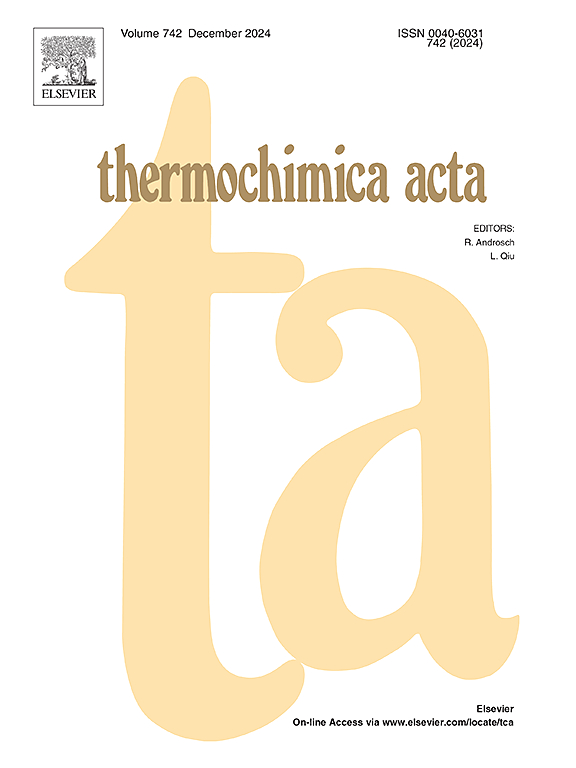热分析和动力学转化度在一般速率方程中的应用
IF 3.1
2区 化学
Q2 CHEMISTRY, ANALYTICAL
引用次数: 0
摘要
通常采用基于一般速率方程的方法研究冷凝相过程的动力学。这里证明,对于动力学分析,应采用两种转化程度:(i)经典动力学中使用的转化程度αkin,通常定义为反应物归一化到初始量的反应量;(ii)热分析转化度α,定义为在温度T(或等温测量时间T)下观察到的热分析效应除以总热分析效应。对于基本反应,αkin = α,使得一般速率方程是描述反应机理的真实速率方程。对于复杂的过程,α - kin和α一般差异很大;它们仅在某些特殊情况下是等价的。在这种情况下,一般的速率方程表示单步近似。因此,α值描述了热交换动力学(对于DSC)或质量损失动力学(对于TG),从实验数据处理中得到的动力学参数也是如此。即使不能从这些动力学参数中得出机械性的结论,它们仍然使我们能够从测量量的角度对复杂过程的动力学进行建模。本文章由计算机程序翻译,如有差异,请以英文原文为准。
Thermoanalytical and kinetic degrees of conversion in the application of general rate equation
Kinetics of condensed-phase processes are routinely studied by methods based on the general rate equation. It is demonstrated here that, for the kinetic analysis, two degrees of conversion should be employed: (i) the degree of conversion used in classical kinetics, αkin, conventionally defined as the reacted amount of a reactant normalized to its initial amount; (ii) the thermoanalytical degree of conversion, α, defined as the thermoanalytical effect observed at temperature T (or at time t for isothermal measurements) divided by the total thermoanalytical effect. For elementary reactions, αkin = α so that the general rate equation is a true rate equation describing the mechanism of the reaction. For complex processes, αkin and α differ considerably in general; they are equivalent for some special cases only. In this case, the general rate equation represents the single-step approximation. The values of α thus describe the kinetics of heat exchange (for DSC) or mass loss (for TG) and so do the kinetic parameters obtained from the treatment of experimental data. Even though no mechanistic conclusions should be drawn from such kinetic parameters, they still enable us to model the kinetics of complex processes from the point of view of the quantity measured.
求助全文
通过发布文献求助,成功后即可免费获取论文全文。
去求助
来源期刊

Thermochimica Acta
化学-分析化学
CiteScore
6.50
自引率
8.60%
发文量
210
审稿时长
40 days
期刊介绍:
Thermochimica Acta publishes original research contributions covering all aspects of thermoanalytical and calorimetric methods and their application to experimental chemistry, physics, biology and engineering. The journal aims to span the whole range from fundamental research to practical application.
The journal focuses on the research that advances physical and analytical science of thermal phenomena. Therefore, the manuscripts are expected to provide important insights into the thermal phenomena studied or to propose significant improvements of analytical or computational techniques employed in thermal studies. Manuscripts that report the results of routine thermal measurements are not suitable for publication in Thermochimica Acta.
The journal particularly welcomes papers from newly emerging areas as well as from the traditional strength areas:
- New and improved instrumentation and methods
- Thermal properties and behavior of materials
- Kinetics of thermally stimulated processes
 求助内容:
求助内容: 应助结果提醒方式:
应助结果提醒方式:


